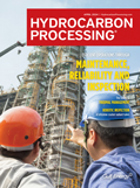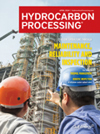Da Silva, M. W. - Petrobras, São José dos Campos, Brazil
Marcio Wagner Da Silva is a Process Engineer and Stockpiling Manager at Petrobras. He has extensive experience in research, design and construction in the oil and gas industry, including developing and coordinating projects for operational improvements and debottlenecking bottom-barrel units. Dr. Silva earned a Bch degree in chemical engineering from the University of Maringa, Brazil, and a PhD in chemical engineering from the University of Campinas (UNICAMP), Brazil. In addition, he earned an MBA degree in project management from the Federal University of Rio de Janeiro, and in digital transformation at PUC/RS, and is certified in business from the Getúlio Vargas Foundation.







Comments